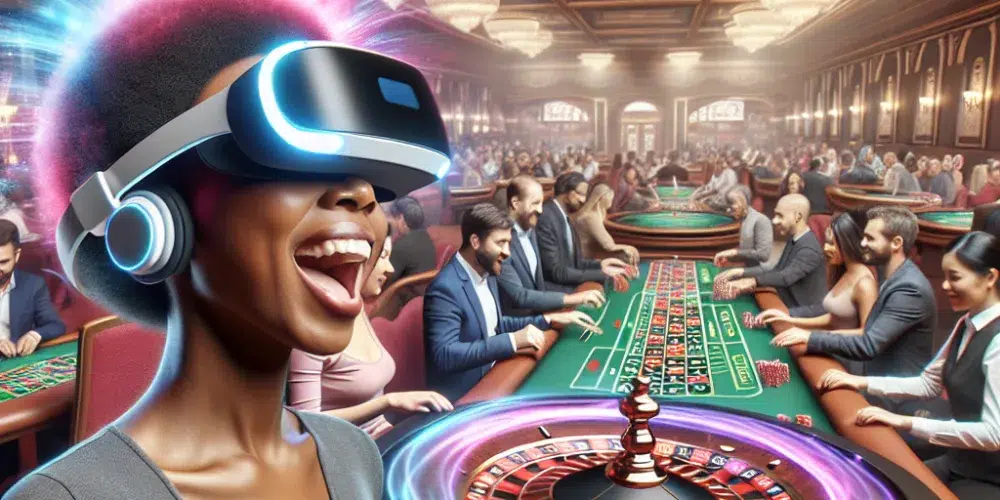The classic casino game of roulette has seen various transformations since its inception. From its humble beginnings with a wooden wheel at the Parisian casinos in the 18th century to online platforms, roulette has always found a way to captivate players. Today, we stand on the brink of another significant evolution with the advent of augmented reality (AR) technology in roulette gaming, promising to enhance player experience and redefine engagement at casinos.
Incorporating AR into Roulette
Augmented reality combines real-world elements with virtual ones to create immersive environments for users. In the world of casinos, AR technology is set to transform traditional roulette into an interactive experience that extends beyond the physical boundaries of the game.
How AR Works in Roulette
At its core, AR technology projects virtual images over real-world objects. For roulette, this could mean seeing a digital display of odds and betting options overlaid on a physical roulette table. Players might use AR glasses or their mobile devices to see these enhancements during live play. This integration not only enriches the visual experience but also aids in making informed betting decisions by displaying last-minute statistics and data projections directly on the gambling table.
Benefits for Players and Casinos
The integration of AR in roulette can significantly enhance player engagement and satisfaction. Here are a few ways how:
Enhanced Gaming Experience
AR can make the roulette experience much more interactive and enjoyable. For instance, when the ball lands on a number, AR could trigger visual effects like 3D animations, making wins feel more rewarding and losses less disappointing.
Educational Tools for New Players
For newcomers, understanding the complexities of roulette can be daunting. AR can offer tutorials and guided modes that help players learn the game without risking substantial money. This feature not only helps build a novice’s confidence but also ensures they enjoy the learning process.
Personalized Gaming Sessions
AR technology can enable casinos to offer personalized gaming experiences. Players could choose themes for the digital elements displayed via AR, such as different wheel designs or table layouts, adding a personal touch to the casino visit.
Challenges and the Future
Despite the promising integration of AR into roulette, there are challenges to address.
Technical Hurdles
Implementing AR requires substantial investment in both hardware and software. Casinos will need to equip themselves with the latest technology to handle these innovations, which might be a significant financial undertaking.
User Adoption
As with any new technology, user adoption can be slow. Traditional players might be hesitant about the new way of playing roulette, preferring the tactile feel of chips and the physical wheel. Convincing them about the benefits of AR will be crucial.
Regulatory Compliance
Adding AR technology to gambling could invite scrutiny from regulatory bodies. Ensuring the new tech complies with gambling regulations will be essential to avoid legal pitfalls.
Conclusion
The integration of augmented reality into roulette represents a substantial leap forward for casino gaming. It brings a novel dimension to the game, aiming to attract tech-savvy players while enhancing the overall entertainment value for all. As AR technology becomes more refined and accessible, we can expect to see more casinos adopting this trend, revolutionizing not just roulette but the entire gambling experience. In this innovative journey, the blend of old charm and new tech holds the promise of keeping the thrills alive in one of the oldest games of chance.

David Harrison stands tall in gambling journalism, marrying his firsthand casino experiences with a deep understanding of betting psychology. His articles transform complex gambling jargon into engaging tales of strategy and chance, making the world of betting accessible and enjoyable. David’s knack for narrative extends beyond print, making him a sought-after speaker on gambling trends and future bets. In the realm of gambling, David is both a scholar and a storyteller, captivating readers and listeners alike.


